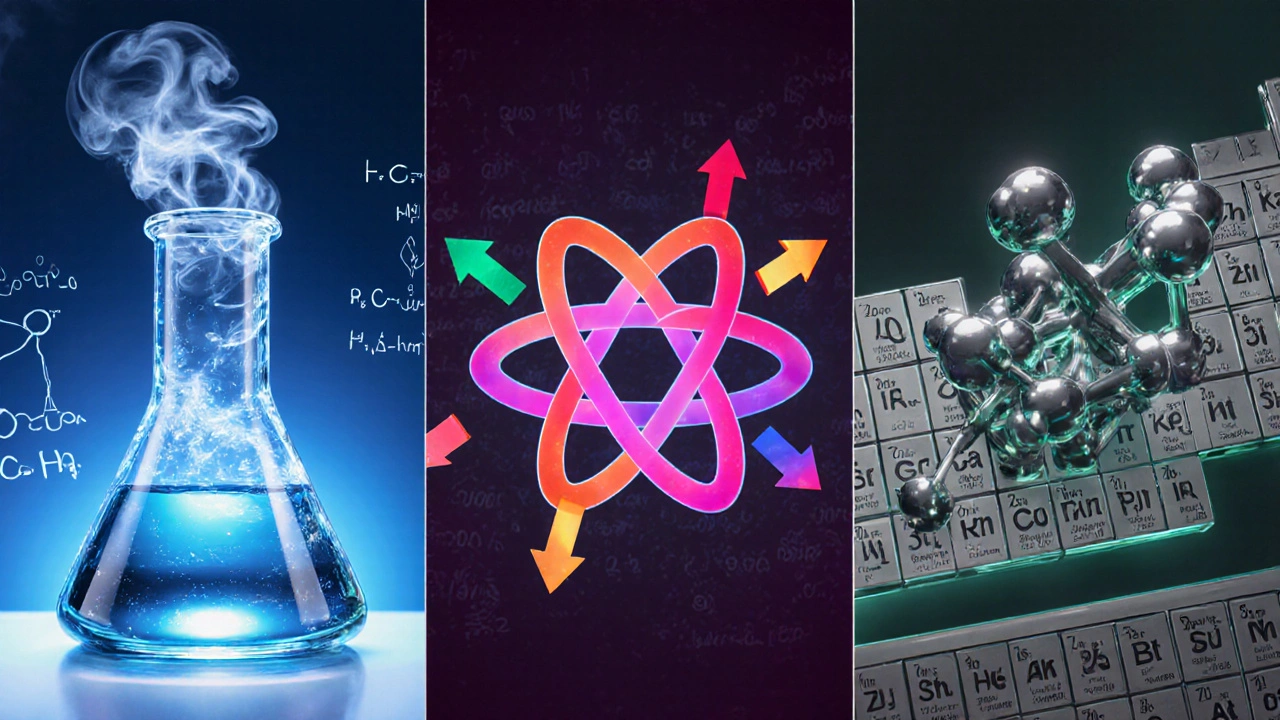JEE Chemistry Difficult Topics: What You Need to Master
When working with JEE Chemistry difficult topics, the parts of the chemistry syllabus that cause the most trouble for JEE aspirants because they blend deep theory with intense problem solving. Also known as tricky JEE Chemistry areas, it Organic Chemistry, the study of carbon‑based reactions, often tops the list due to complex mechanisms and synthesis pathways, Physical Chemistry, covers thermodynamics, kinetics, and electrochemistry, where math‑heavy calculations trip many students, and Inorganic Chemistry, focuses on coordination compounds and periodic trends that demand memorisation of numerous exceptions. JEE Chemistry difficult topics are a must‑know if you aim for a top rank.
These three branches don’t exist in isolation. JEE Chemistry difficult topics encompass organic reaction mechanisms, physical chemistry equations, and inorganic coordination geometry—all of which interlink. For example, understanding the thermodynamic feasibility of a redox reaction in physical chemistry helps you predict product stability in inorganic complexes. Likewise, mastery of organic functional groups simplifies the way you approach reaction‑type questions in the JEE exam. In short, a solid grasp of one sub‑area lifts the others, creating a synergy that boosts overall performance.
Why These Topics Feel Hard and How to Break Them Down
The difficulty stems from two main factors: depth of concepts and speed of application. First, concepts like quantum numbers or ligand field theory are abstract; they require visualising atomic‑level interactions that aren’t obvious from textbooks. Second, JEE questions demand rapid calculations—often under time pressure—so a student must convert theory into numbers in seconds. To tackle this, treat each topic as a three‑step process: (1) learn the core definition, (2) work through a handful of representative problems, and (3) apply the pattern to varied question styles. This method turns a massive syllabus into manageable chunks.
Another hidden hurdle is the overlap between syllabus chapters. For instance, the rate law derivation in physical chemistry appears again when you study catalytic cycles in organic chemistry. Recognising these cross‑references saves study time and deepens understanding. Use a simple table: list the topic, its key formula or rule, and where it reappears elsewhere in the JEE syllabus. Over time, the table becomes a mental map that lets you retrieve information quickly during the exam.
Resources matter too. Many students rely on standard textbooks, but supplementing them with concise revision notes focused on difficult topics makes a big difference. Short videos that walk through a single mechanism or derivation can clarify steps that look confusing on paper. Pair each video with a quick quiz to test recall—active recall cements memory far better than passive reading.
Practice strategy is the final piece of the puzzle. Rather than solving hundreds of random problems, target the high‑frequency difficult topics. Analyze past JEE papers: you’ll notice that certain reaction types—like SN1/SN2 mechanisms, Hess’s law applications, and crystal field theory questions—appear repeatedly. Allocate 60 % of your study time to these, and reserve the remaining 40 % for broader coverage. This focused approach maximises score impact while keeping the workload realistic.
When you combine a clear definition, cross‑topic linking, tailored resources, and targeted practice, the once‑daunting JEE Chemistry difficult topics become approachable. Below you’ll find a curated collection of articles that dive deeper into each sub‑area, share proven memorisation tricks, and offer step‑by‑step problem‑solving guides. Explore the posts to sharpen your skills and turn those difficult topics into your strongest scoring sections.
